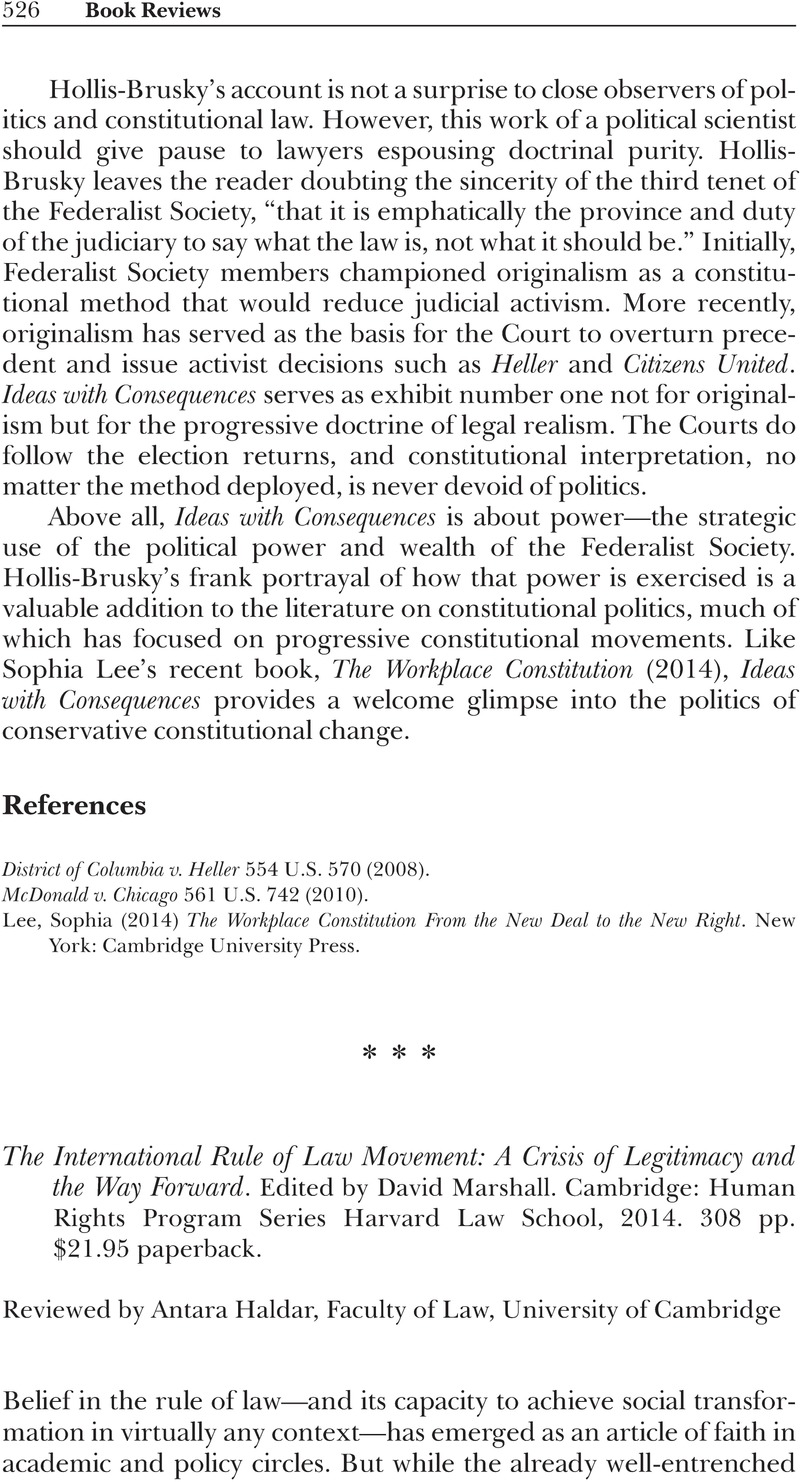No CrossRef data available.
Article contents
The International Rule of Law Movement: A Crisis of Legitimacy and the Way Forward. Edited by David Marshall. Cambridge: Human Rights Program Series Harvard Law School, 2014. 308 pp. $21.95 paperback.
Review products
The International Rule of Law Movement: A Crisis of Legitimacy and the Way Forward. Edited by David Marshall. Cambridge: Human Rights Program Series Harvard Law School, 2014. 308 pp. $21.95 paperback.
Published online by Cambridge University Press: 01 January 2024
Abstract
An abstract is not available for this content so a preview has been provided. Please use the Get access link above for information on how to access this content.

- Type
- Book Reviews
- Information
- Copyright
- © 2016 Law and Society Association.
References
Ostrom, Elinor (1990) Governing the Commons: The Evolution of Institutions for Collective Action. Cambridge: Cambridge University Press.CrossRefGoogle Scholar


